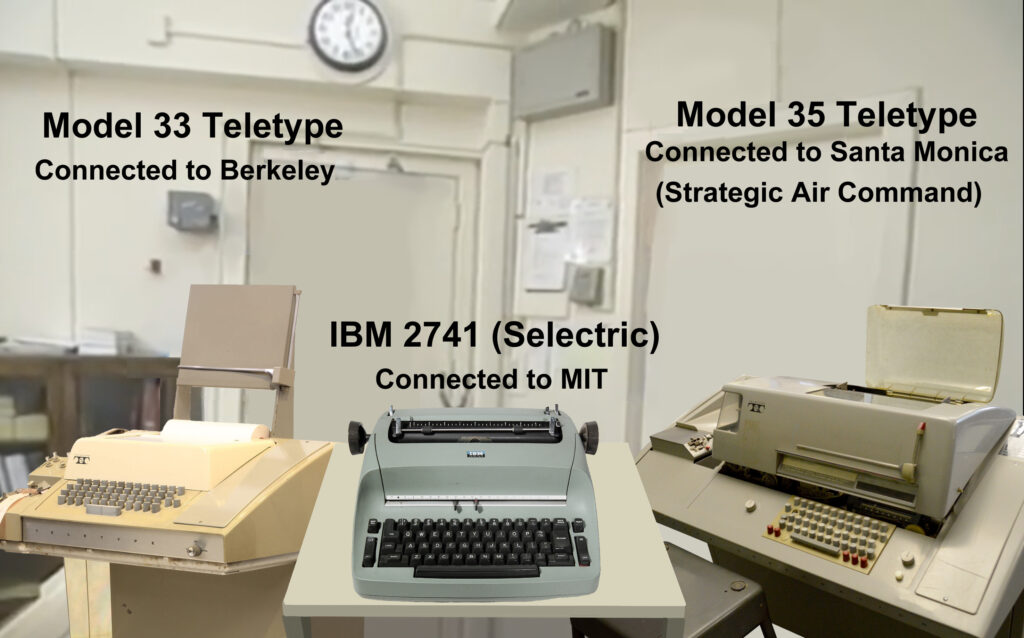From Frustrated Director to Global Network: The Untold Story of the Internet’s Genesis
From Frustration to Innovation: The Birth of the Internet
The internet. A ubiquitous force shaping modern life, connecting billions across continents. But its origins? Surprisingly humble, born not from grand visions of a global network, but from the annoyance of a single man facing too many computer terminals.
The Seeds of Connection: 1966 and the ARPA’s Problem
The year is 1966. Robert Taylor, director of the Advanced Research Projects Agency’s Information Processing Techniques Office (IPTO), found himself surrounded by a technological challenge. His office, nestled within the Pentagon, housed three massive computer terminals, each connected to a different mainframe. The sheer inconvenience of navigating these disparate systems – each with its unique login procedures and data retrieval methods – proved frustrating. This seemingly minor inconvenience, however, would become the catalyst for one of history’s most transformative technological advancements.

Author’s re-creation of Bob Taylor’s office with three teletypes. Credit: Rama & Musée Bolo (Wikipedia/Creative Commons), steve lodefink (Wikipedia/Creative Commons), The Computer Museum @ System Source
Imagine the scene: room-sized computers, accessed via teletype terminals – electric typewriters connected by serial cables or modems and phone lines. ARPA, established in 1958 by President Eisenhower in response to the Sputnik launch, was funding numerous research projects across the US. Yet, these projects operated in isolation, their resources inaccessible to one another. This lack of interconnectivity was a significant impediment to progress.
The Vision Takes Shape: A Network of Networks
Taylor’s frustration sparked an innovative idea: what if these disparate computer systems could be interconnected? What if a network could be created, allowing researchers across the country to share resources and collaborate seamlessly? This seemingly simple concept laid the groundwork for what would eventually become the internet.
This wasn’t merely a matter of connecting machines; it was about creating a system resilient enough to withstand failures. A single point of failure could cripple the entire network. The solution required a decentralized architecture, a network of networks, able to route information even if parts of it were offline. This concept, revolutionary for its time, was the key to the internet’s future robustness and scalability.
The Technological Challenges and Early Innovations
Building such a network presented significant technological hurdles. The existing communication technologies were inadequate. Packet switching, a method of breaking down data into smaller packets for transmission, emerged as a crucial solution. This allowed for efficient and flexible data transfer, even across unreliable connections. It was a paradigm shift in data communication, paving the way for the internet’s dynamic and adaptable nature.
The development of protocols, the rules governing data transmission and communication between devices, was equally critical. These protocols ensured that different computer systems could understand and exchange information, despite their inherent differences. The standardization of these protocols was paramount to the internet’s future success, preventing technological fragmentation and ensuring interoperability.
The ARPANET: A First Step Towards the Internet
The ARPANET, launched in 1969, served as the first practical realization of this vision. Four nodes – at UCLA, Stanford Research Institute, UC Santa Barbara, and the University of Utah – formed the initial network. While limited in scope and speed compared to today’s internet, it demonstrated the feasibility of interconnected computer systems and laid the foundation for future development.
The ARPANET’s success wasn’t without its challenges. Technical glitches, network congestion, and the need for constant improvement were all part of the process. However, the inherent adaptability and decentralized nature of the network ensured its survival and evolution.
The Legacy of Vision and Innovation
From a single director’s frustration to a global network connecting billions, the story of the internet’s genesis is a testament to human ingenuity and the transformative power of collaboration. Robert Taylor’s vision, coupled with the groundbreaking work of countless engineers and researchers, has shaped the world as we know it today. The internet’s enduring impact is a testament to the power of innovative thinking and a relentless pursuit of progress, all stemming from the need to solve a simple problem: too many computer terminals in one office.
The next part of this series will delve deeper into the key innovations and pivotal moments that propelled the ARPANET’s evolution into the global internet we use today. Stay tuned!
Source: Ars Technica



